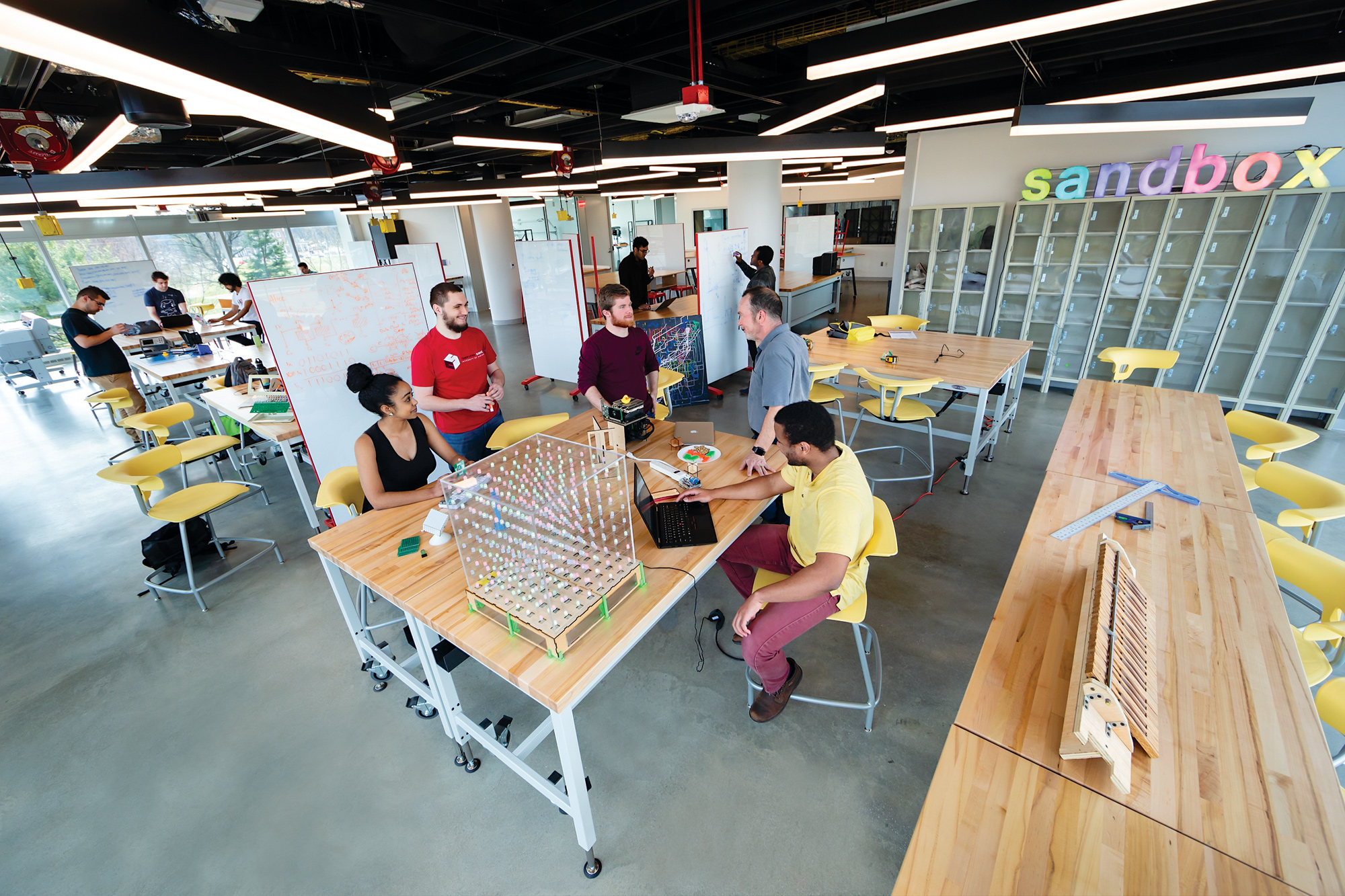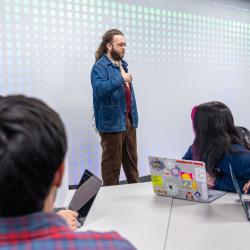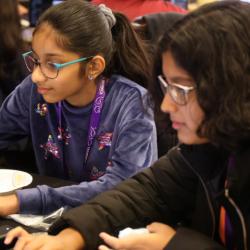Turning Ideas Into Reality

Teaching entrepreneurship means giving students the skills they need to turn an idea into a reality, according to Bill Pugh, professor emeritus of computer science at the University of Maryland. "You have to figure out if building your idea is feasible and what technology you should use," Pugh said. "You bounce it off other people. Maybe you start implementing it and find it isn't going to work, or maybe the technology works but it just isn't compelling, so you pivot. And you keep pivoting until you eventually come up with something that is either useful to you or wows your friends and family. Those are the skills you need to become an entrepreneur."
An opportunity to foster that process inspired Pugh to lead the initiative for the new 5,300-square-foot Jagdeep Singh Family makerspace in the Brendan Iribe Center. Over the years, Pugh has been a strong supporter of innovation in computer science education at UMD, donating nearly $1.5 million along with his wife, Lisa Orange. The couple's most recent gift provided $500,000 to staff and operate the new makerspace and $250,000 to coordinate makerspaces across campus.
A $1 million gift from Jagdeep Singh (B.S. '86, computer science and economics) and his wife, Roshni, provided building funds to support the makerspace, which is affectionately called the Singh Sandbox. The name is a nod to the first Sandbox, a makerspace that opened in 2016 in the Computer Science Instructional Center.
"It's so important for students to gain experience beyond the traditional computer science curriculum that is often focused on software," Jagdeep Singh said. "Makerspaces are a wonderful way for students to work with tangible hardware and apply real-life problem-solving skills to create something in the real world."
The Singh Sandbox will be guided by the interests of students from any major who can make something, even if it's unrelated to research or a class. Consisting of six workshop spaces and a large communal work area on the first floor, Sandbox provides access to specialized equipment. The facilities include two laser cutters, a fully equipped wood shop, a large-format printer, a vinyl cutter, a metal milling machine, two types of 3D printers, an advanced electronics fabrication and analysis shop, sewing machines, hot glue guns, a button maker, and more.
"The Iribe Center was designed to encourage students to be inventive, to think about what they can do with technology and to partner with people outside their disciplines," Pugh said. "They'll come here, see research with drones and robots, as well as art projects infused with technology—all done by students—and they'll be excited to get involved."
Written by Kimbra Cutlip
See also:
- Opening a Door to Tomorrow: The Brendan Iribe Center for Computer Science and Engineering projects the university's future
- Creating a Sense of Community: New initiative Expands inclusion and diversity in computer science at UMD
- Cultivating Leadership: Andrew Reisse Endowed Teaching Award supports undergraduates educating peers
- Building a Hub for Tech Leaders: Donor support funds eight new endowed faculty positions in the Department of Computer Science
- Driving Research Advances: Students and faculty members tackle global-scale problems and challenges of everyday life
- Our Generous Donors: Thank you to the people who made the Brendan Iribe Center possible
This article was published in the Spring 2019 issue of Odyssey magazine. To read other stories from that issue, please visit go.umd.edu/odyssey.







